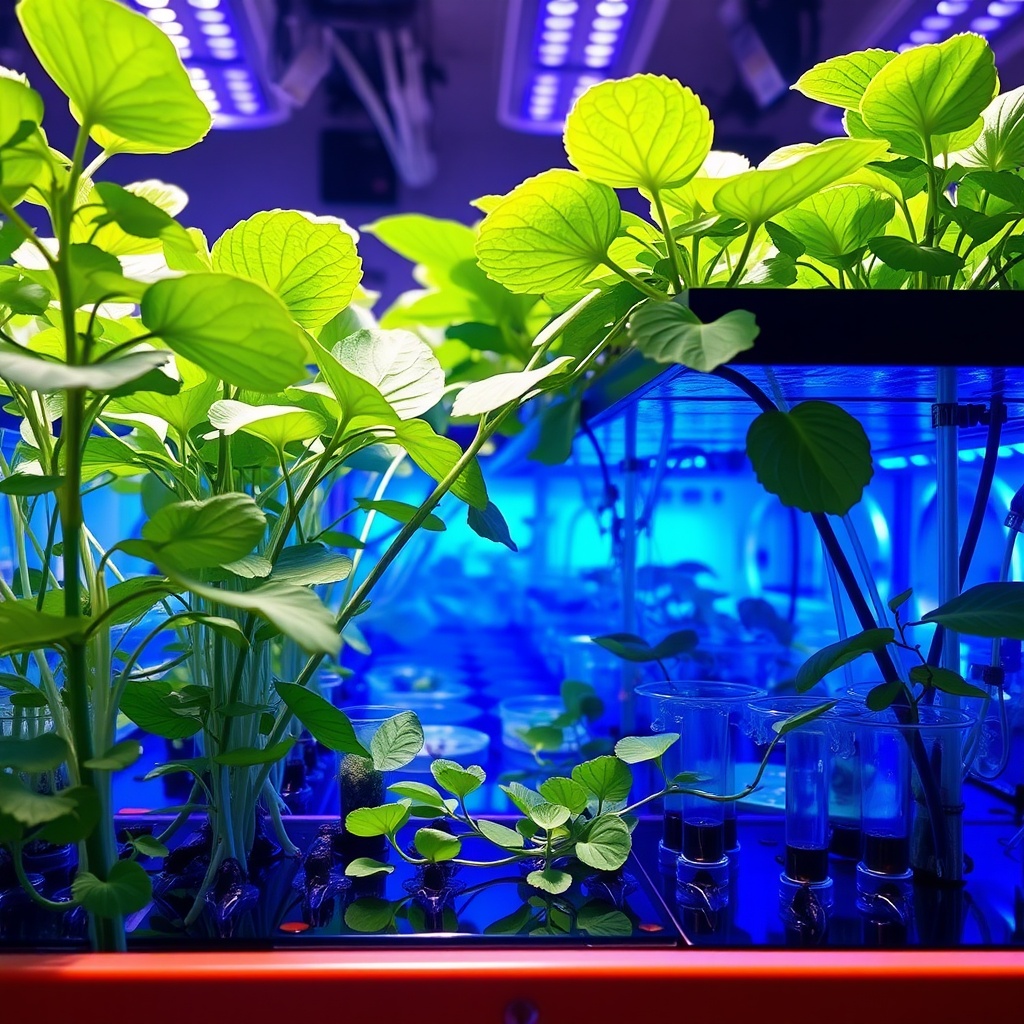The blue light spectrum plays a pivotal role in the vegetative growth of plants, particularly in hydroponic systems. As urban farming techniques gain momentum, understanding the specific wavelengths that best support plant health and productivity becomes increasingly crucial. This article delves into the scientific principles behind blue light and its effects on plant growth, highlighting its significance in hydroponics.
Mechanisms of Blue Light on Plant Growth

Blue light, typically in the range of 400-500 nm, is absorbed primarily by chlorophyll and influences various physiological processes in plants. This section explores how blue light interacts with plant systems to enhance growth.
- Photosynthesis Efficiency: Blue light is integral to the photosynthetic process, promoting the synthesis of chlorophyll and thereby increasing the plant’s ability to convert light into energy.
- Stomatal Opening: Exposure to blue light triggers the opening of stomata, facilitating gas exchange and optimizing photosynthesis.
- Leaf Expansion: Plants exposed to adequate blue light tend to have larger leaves, which improves their ability to capture light and perform photosynthesis.
Comparative Analysis of Light Spectra in Hydroponics

While blue light is essential for vegetative growth, it’s important to compare its effectiveness against other light spectra used in hydroponics. The following table summarizes key differences and benefits of blue light versus red light, which is often used for flowering and fruiting stages.
| Light Spectrum | Primary Benefits | Optimal Growth Stage |
|---|---|---|
| Blue Light (400-500 nm) | Enhances chlorophyll production, promotes leaf growth | Vegetative Phase |
| Red Light (600-700 nm) | Stimulates flowering and fruiting, promotes stem elongation | Flowering Phase |
Implementing Blue Light in Hydroponic Systems
Incorporating blue light into hydroponic systems can significantly improve plant health and yield. Growers should consider various factors when implementing blue light systems, including the type of light source, duration of exposure, and the specific needs of the plants being cultivated.
Utilizing LED grow lights that emit specific wavelengths can provide targeted light, ensuring that plants receive the necessary blue spectrum for optimal growth. Additionally, adjusting light cycles can simulate natural conditions, further enhancing vegetative growth.




